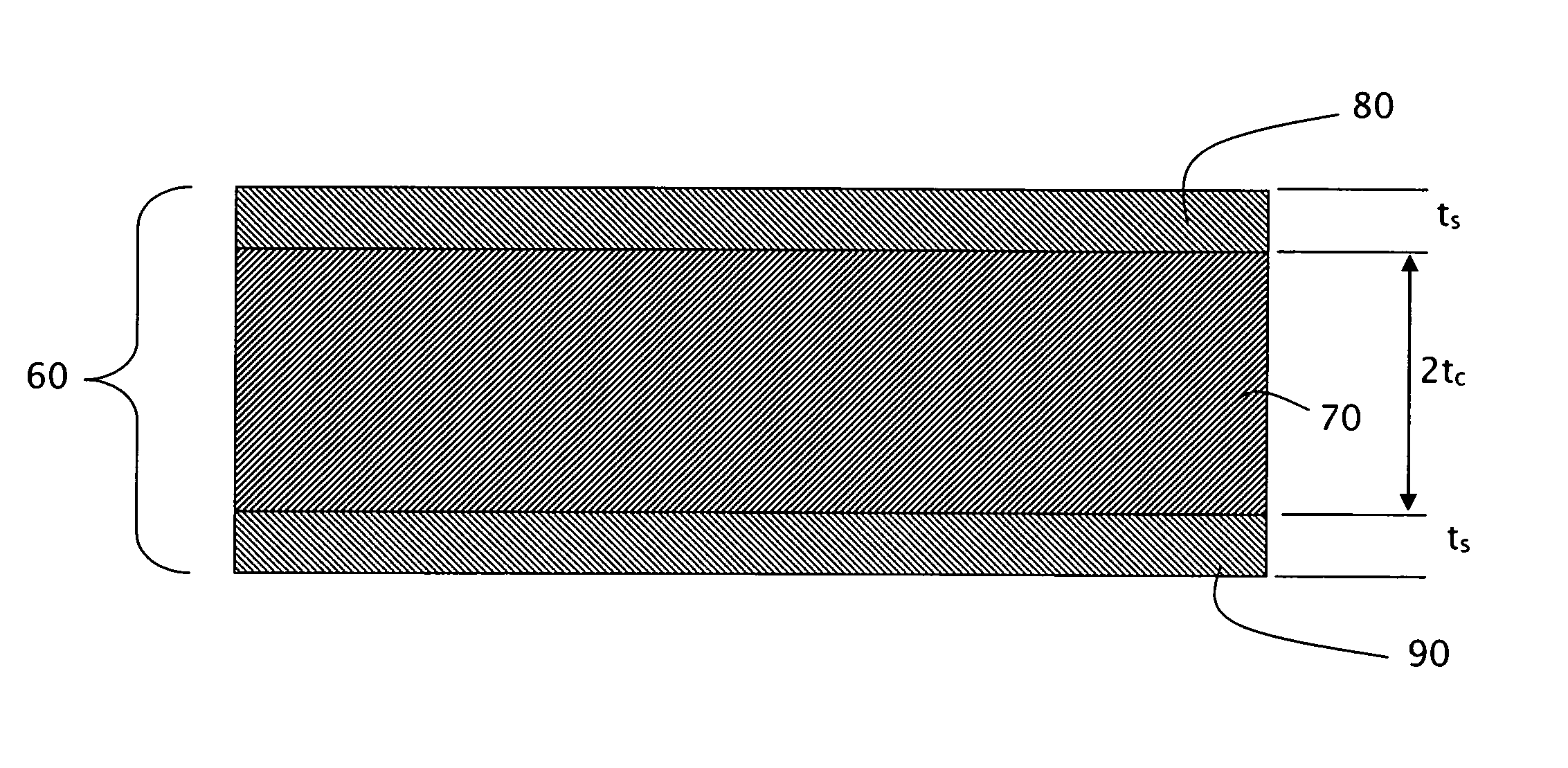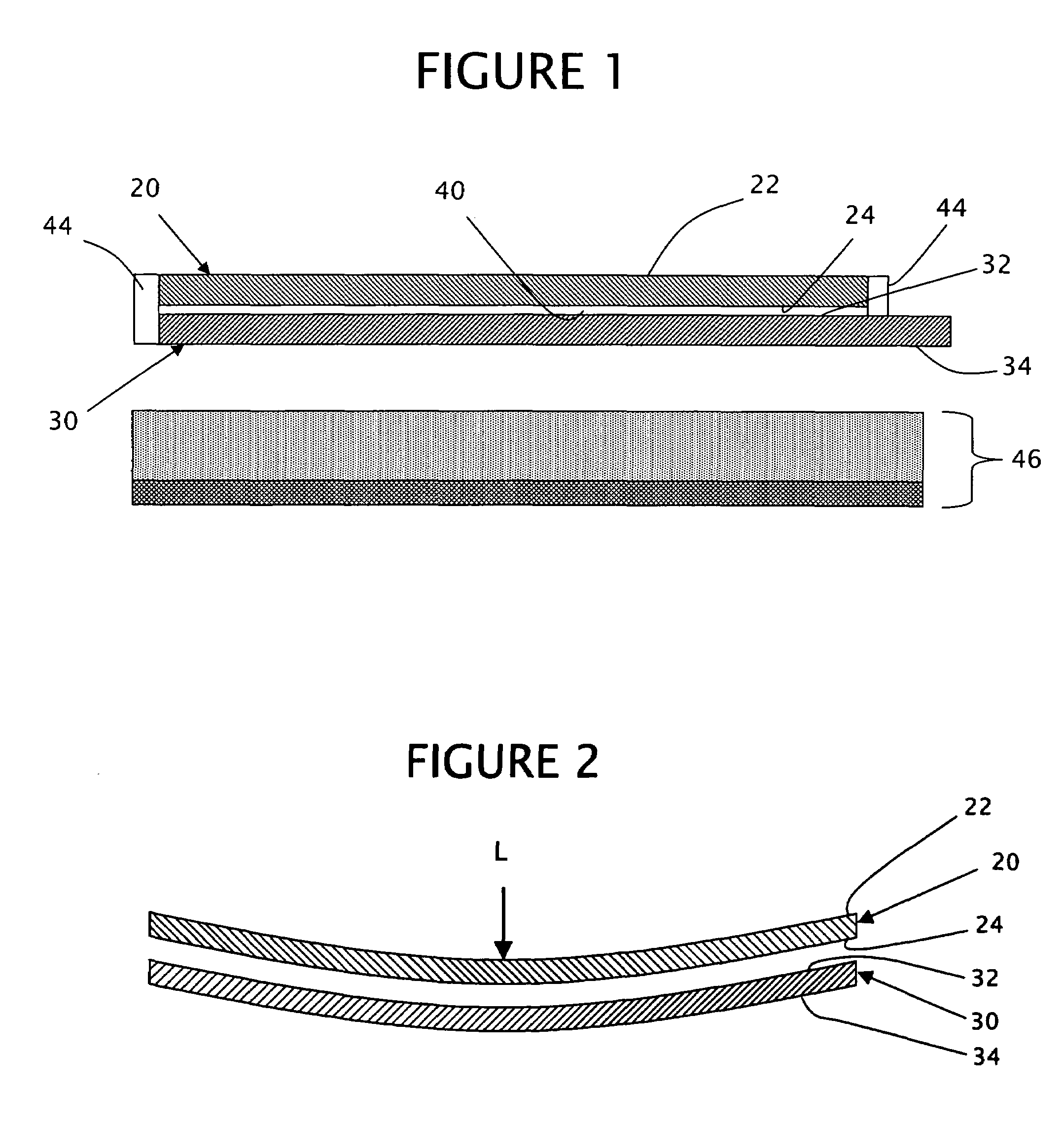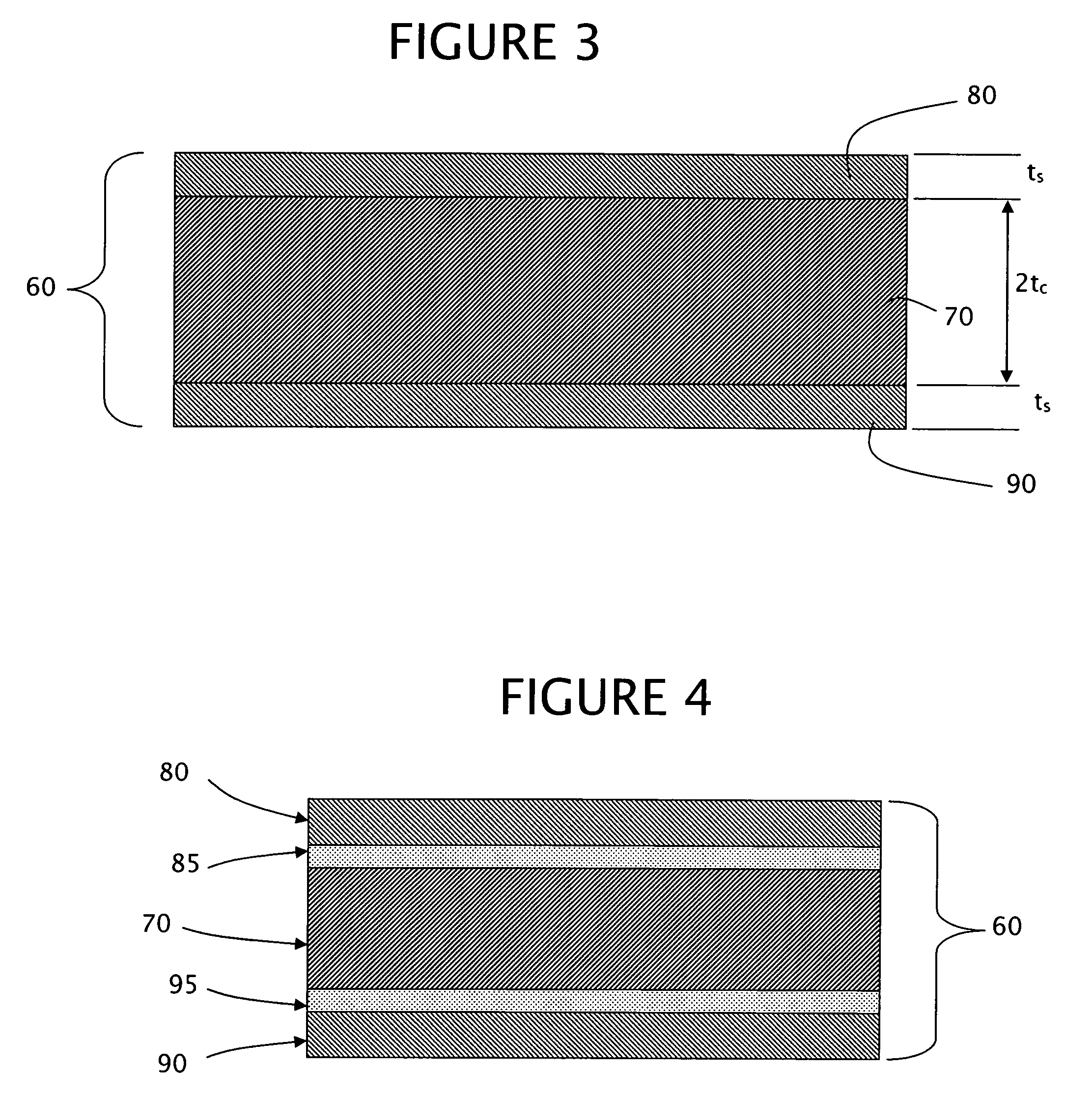Glass laminate substrate having enhanced impact and static loading resistance
a technology of static loading and glass laminate, applied in the field of electronic substrates, can solve the problems of limiting the application of plastic sheets in displays, reducing and reducing the application of organic light emitting materials used in oled displays, so as to enhance the loading resistance of substrates and increase the resistance to impact and static loading
- Summary
- Abstract
- Description
- Claims
- Application Information
AI Technical Summary
Benefits of technology
Problems solved by technology
Method used
Image
Examples
example 1
[0041]
Eα (RT to setpoint,Glass(×106 psi)ν×10−6 / C)T* (C)Corning Code 173710.30.234.20671(core 70)Corning EAGLE2000 ™10.30.233.61671(skin layers 80, 90)
[0042]σs=-5098.6[1+tstc]σc=-5098.6[1+tcts]
[0043]
2(tc + ts)tctsσcσs(mm)(mm)(mm)tc / ts(psi)(psi)σs / σc1.10.4960.05399.197500−45999.1971.10.3880.16182.3991500−35992.3991.10.3340.21581.5492000−30991.5490.70.3160.03439.197500−45999.1970.70.2810.06864.0991000−40994.0990.70.2500.10002.51457−36422.50.70.2470.10302.3991500−35992.3990.70.150.20.752913−21850.750.40.180.01969.197500−45999.1970.40.1610.03924.0991000−40994.0990.40.050.20.333824−12750.33
example 2
[0044]
Eα (RT to setpoint,Glass(×106 psi)ν×10−6 / C)T* (C)Corning Code 70599.80.285.01598(core 70)Corning EAGLE2000 ™10.30.233.61671(skin layers 80, 90)
[0045]σs=-10919[1.0175+tstc]σc=10731[0.983+tcts]
[0046]
2(tc + ts)tctsσcσs(mm)(mm)(mm)tc / ts(psi)(psi)σs / σc1.10.5240.025620.479500−1024020.481.10.4990.05129.7481000−97489.741.14730.07676.1711500−92576.170.70.3340.016320.479500−1024020.480.70.3170.03269.7481000−97849.740.70.3010.04886.1711500−92576.170.70.2850.06504.3832000−87654.380.40.1910.009320.479500−1024020.480.40.1810.01869.7481000−97489.750.40.1720.02796.1711500−92576.17
example 3
[0047]
Eα (RT to setpoint,Glass(×106 psi)ν×10−6 / C)T* (C)Corning Code 031710.40.229.8581(core 70)Corning EAGLE2000 ™10.30.233.61671(skin layers 80, 90)
[0048]σs=-45888.5[0.997+tstc]σc=46037.5[1.003+tcts]
[0049]
2(tc + ts)tctsσcσs(mm)(mm)(mm)tc / ts(psi)(psi)σs / σc1.10.5260.023922.0162000−4402122.010.70.3310.019017.4122500−4352017.410.70.3230.026612.1513500−4251712.150.40.1910.008722.0162000−4402122.01
[0050]A representative glass laminate substrate 60 having elastic moduli Es and Ec of 10.3×106 (pounds per square inch) psi (7.1×104 MPa), Poisson's ratios νs and νc, of 0.22, T*=671° C., αc=37.8×10−7, αs=31.8×10−7, tc=0.30 mm, and ts=0.05 mm provides a residual compressive stress in the skin layer of 4,400 psi (30.3 MPa) and an internal tensile stress in the core 70 of 725 psi (5 MPa). Such laminate has a surface strength approximately 10% to 25% greater than a corresponding unlaminated core, as measured by the industry known ring-on-ring strength test. It has been observed that the internal t...
PUM
| Property | Measurement | Unit |
|---|---|---|
| residual compressive stress | aaaaa | aaaaa |
| residual tensile stress | aaaaa | aaaaa |
| residual compressive stress | aaaaa | aaaaa |
Abstract
Description
Claims
Application Information
 Login to View More
Login to View More - R&D
- Intellectual Property
- Life Sciences
- Materials
- Tech Scout
- Unparalleled Data Quality
- Higher Quality Content
- 60% Fewer Hallucinations
Browse by: Latest US Patents, China's latest patents, Technical Efficacy Thesaurus, Application Domain, Technology Topic, Popular Technical Reports.
© 2025 PatSnap. All rights reserved.Legal|Privacy policy|Modern Slavery Act Transparency Statement|Sitemap|About US| Contact US: help@patsnap.com



